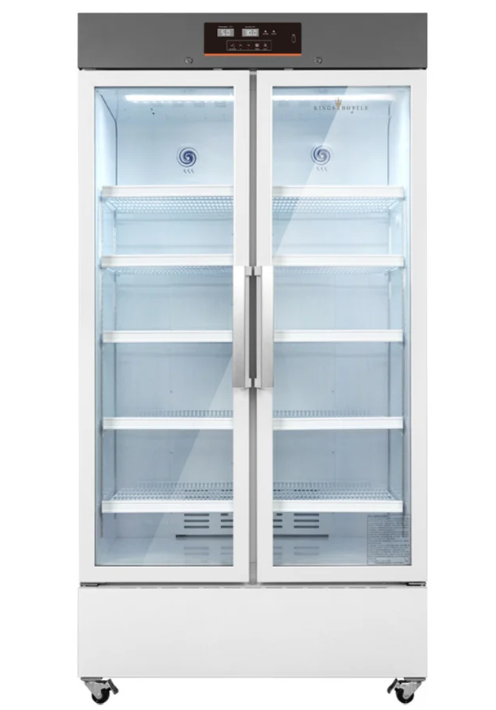
Why Humidity Matters in a Wine Fridge and How to Adjust It
When it comes to wine storage, temperature gets almost all the attention, rightly so, as it directly impacts the aging process. But what many new, and even seasoned, wine collectors overlook is humidity, which is equally crucial for preserving both the wine and its value. Proper humidity ensures that corks don’t dry out, labels don’t rot, and your carefully assembled collection is protected for years (or even decades) to come.
In this in-depth guide, we explore why humidity is vital in a wine fridge, the risks of neglecting it, and how to perfectly control it, backed by practical steps, scientific insights, and all the know-how you need to enjoy every bottle at its peak.
Why Is Humidity So Important in Wine Storage?
Wine is a complex, living product. It changes over time, mellowing and developing nuanced flavors through a process called maturation. The way wine matures, whether it becomes better or worse, depends less on luck than on the quality of the storage environment.
-
The Cork’s Crucial Role:
Natural cork stoppers are made from tree bark that’s both strong and slightly porous. Cork lets microscopic amounts of oxygen through, just enough for wine to mature slowly, but not so much that it oxidizes and spoils. If humidity is too low, the cork dries out and contracts, letting air in rapidly, which ages wine far too fast or ruins it altogether. -
The Consequences of Imbalance:
Too low humidity lets the cork desiccate (dry out), shrink, and lose its seal. Oxygen enters, wine leaks out, and labels get stained or discolored. If humidity is too high, mold and mildew flourish. While these generally don’t infiltrate the bottle, they can destroy labels, capsules, wooden racks, and even the fridge itself. -
It’s Not Just About Corks:
Even bottles with screw caps or synthetic corks benefit from stable humidity. High moisture can damage labels and electronics, while low humidity can cause wood racking to split or even spoil valuable bottle packaging, which matters to collectors.
What Happens When Humidity Goes Wrong?
Low Humidity: The Invisible Enemy
Humidity is often invisible, you can’t tell by sight or feel what’s happening inside a sealed fridge. But when it drops below 50%, trouble starts slowly and can be catastrophic:
-
Cork Shrinkage: Moisture loss causes the cork to pull away from the glass. Gaps form, letting in unwanted oxygen and possibly even odors from outside.
-
Premature Oxidation: When oxygen enters, delicate aromas are lost and wine quickly deteriorates. The taste becomes flat, stale, and eventually vinegar-like.
-
Wine Leakage: In some cases, the shrinking cork can’t contain the liquid, and wine seeps out, damaging labels, racks, or other bottles nearby.
-
Dried-Out Racking: Wood used in racks or cabinetry inside your fridge will also crack or warp in dry conditions, further risking bottle security.
High Humidity: A Messy Menace
Excessively damp environments, usually above 75% humidity, present an entirely different set of dangers:
-
Moldy Labels: Mold spores thrive on damp paper, eating away at labels. This not only detracts from the bottle’s aesthetic but also reduces its resale or collector’s value.
-
Mildew Growth: Damp conditions affect glue and paper. Mildew can spread quickly, even to surfaces not in direct contact with moisture, including racking and fridge interiors.
-
Corrosion: High moisture levels can lead to rust on racking, screws, hinges, and, over time, can even compromise the electronics of your fridge.
Unstable or Fluctuating Humidity
Frequent swings between dry and damp can be more harmful than a consistently off-balance level. When corks expand and contract repeatedly, their integrity weakens. This can cause “wine creep” (wine wicking up along the cork), resulting in sticky residues, oxidized flavors, and unpredictable aging.
How Wine Fridges Manage Humidity
Not all wine fridges are designed the same.
How Do Standard Wine Fridges Handle Humidity?
-
Passive Regulation: These units neither add nor remove moisture except as a byproduct of their cooling cycle. When you open the door, they take in a slice of outside air; as the internal temperature drops, some water vapor condenses (sometimes visible as a fog inside the fridge or droplets on bottles).
-
Reliance on Room Air: Whatever the humidity level is in your home (often much lower in heated or air-conditioned spaces) will gradually influence the fridge’s interior once you load in bottles.
How Do Advanced Wine Fridges Work?
-
Active Humidity Control: High-end wine fridges can add or remove moisture using electronic humidistats, mini-humidifiers, or integrated water reservoirs. Some models automatically sense and adjust humidity, simulating conditions of professional wine cellars.
-
Digital Monitoring: Many have built-in hygrometers, real-time data tracking, and alerts for deviations, which is critical for investment-grade collections or long-term cellaring.
Why Do Most Fridges Drift Dry?
Most homes are kept at 30–50% relative humidity, especially in winter or dry climates. The chilled environment of a wine fridge, combined with frequent door opening, encourages moisture to escape, and unless you intervene, the humidity level inside can quickly fall below what’s healthy for wine.
How to Measure Humidity in Your Wine Fridge
Step 1: Choose a Hygrometer
A hygrometer, whether analog or digital, tells you the humidity inside the fridge. Look for accuracy, small size, and easy reading (many cigar hygrometers are perfect for wine storage).
Step 2: Placement
-
Place the hygrometer at bottle level, ideally away from vents or the fridge door.
-
For multi-shelf units, you might use two to track potential humidity differences.
-
Leave it in place for at least 24 hours before trusting the reading.
Step 3: Regular Checks
-
Weekly readings are a good standard for normal usage.
-
After adding/removing bottles, after power losses, or after any storage changes, monitor for new trends.
Step 4: Trending and Logging
Keeping a log (paper, app, or smart home system) helps spot gradual drifts before they harm your collection.
How to Adjust Humidity in Your Wine Fridge
Increasing Humidity
If the average humidity reads below 50%, it’s time to intervene. Here are effective and safe ways to boost humidity within your wine fridge:
1. Sponge or Cloth Method
-
Soak a clean, scentless, bleach-free sponge or small cloth in distilled water.
-
Place it in a shallow dish at the bottom or in the back corner of your fridge.
-
Evaporation will add humidity to the air. Check and re-moisten weekly.
2. Open Container of Water
A small dish, bowl, or glass of distilled water placed inside your fridge, especially near the fan or air circulation point, can gradually raise humidity.
-
Pro Tip: The larger the surface area of the water, the more moisture released.
3. Humidity Beads or Gel Packs
Commercially available humidity control packs (often used in cigar humidors) offer slow-release humidity and are mess-free. Be sure they’re food safe and contain no fragrance.
4. Integrated Humidifiers
If your fridge model supports it, use the built-in water tray or cartridge. Only use distilled water to prevent mineral buildup and mold.
5. Increase Bottle Density
A fuller fridge will lose humidity more slowly, as each bottle acts as a humid buffer.
Decreasing Humidity
If the average humidity consistently exceeds 75%, especially in older, leaky, or poorly ventilated fridges:
1. Remove Water Sources
Take out any water dishes, sponges, or humidity packs you may have previously added.
2. Use Desiccants
Add a small food-safe silica gel pack or other humidity absorber. Replace or recharge as per instructions.
3. Brief Door Opening
If your ambient room is dry, opening the fridge briefly will vent out some of the damp air. Avoid this in humid climates, as you may inadvertently add moisture.
4. Check for Leaks or Spills
Pooling water inside or a faulty door seal encourages high humidity. Wipe clean and inspect all seals and gaskets.
5. Improve Air Circulation
Do not block vents; ensure bottles are not pressed tightly against air flow grilles.
Keep Adjustments Gradual
Sudden, drastic changes (such as removing all water sources or running a fan inside overnight) can cause wild humidity swings, which stress corks and labels. Make changes incrementally, observe over several days, and adjust again as needed.
Best Practices for Maintaining Humidity in a Wine Fridge
-
Store Bottles Horizontally:
This keeps wine pressed against the cork, helping maintain interior moisture and preventing the cork from drying out, even during minor humidity dips. -
Monitor with Technology:
Invest in a reliable, digital hygrometer. Premium models sync with smartphones, letting you know instantly if humidity strays out of range. This is especially wise for those with large or valuable collections. -
Routine Cleaning:
Regularly wipe down surfaces, racks, and water trays or reservoirs. Remove any signs of mold or mildew quickly to preserve air quality. -
Rotate and Inspect Bottles:
During inventory checks, look at corks and labels for warning signs, dampness, odors, curl, or stains. -
Maintain Your Fridge:
Clean fans, vents, and the door seal regularly. Any dirt or damage here can reduce cooling efficiency, worsen humidity, or allow mold to develop.
When to Consider a Wine Fridge with Humidity Control
For most everyday wine lovers, simple, manual humidity fixes are usually sufficient, especially if the collection isn’t intended for decades of aging.
However, serious collectors, investors, or anyone storing wine for more than five years should consider a professional or commercial-grade wine fridge that offers:
-
Automated humidity addition/removal
-
Precise digital monitoring and alarms
-
Stable, filtered airflow for mold prevention
-
Multiple zones for differing varieties or bottle types
These systems may cost more up front, but they pay dividends by protecting what are often valuable, irreplaceable bottles.








